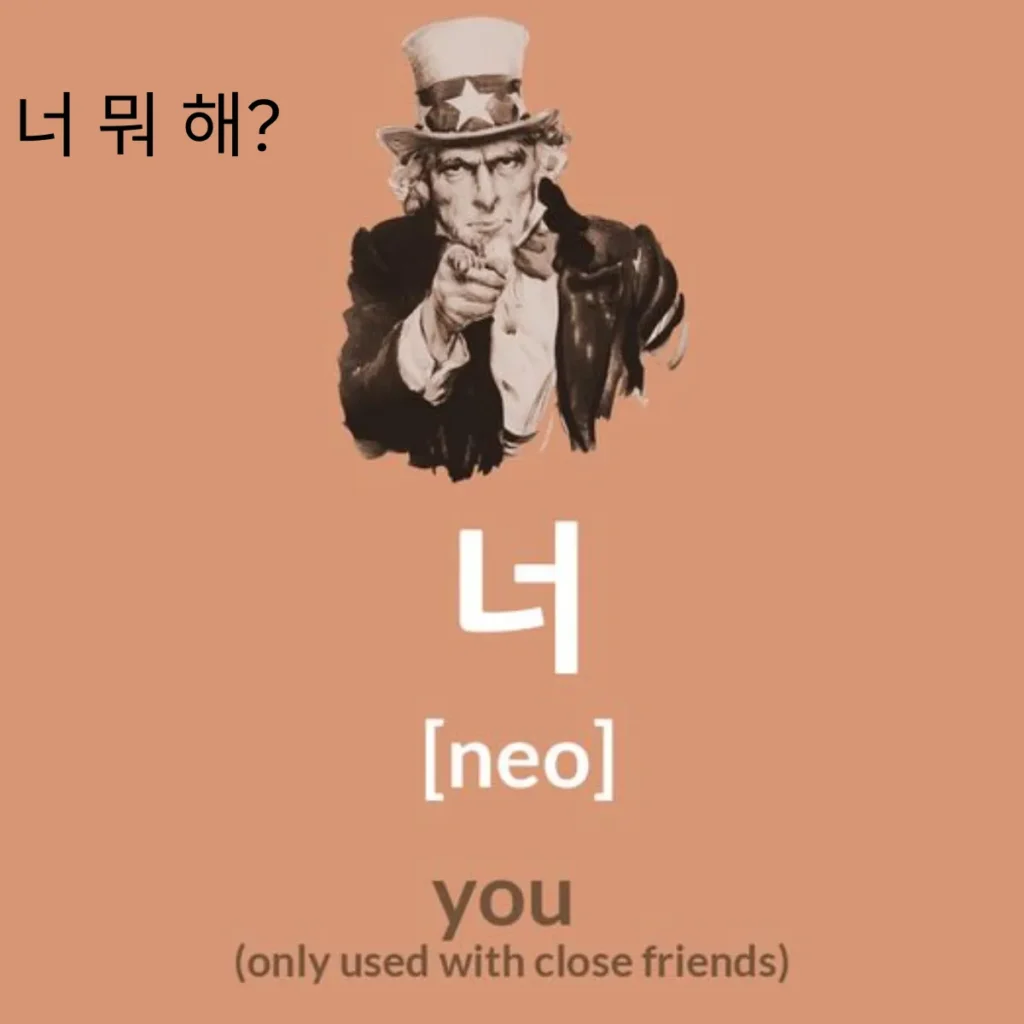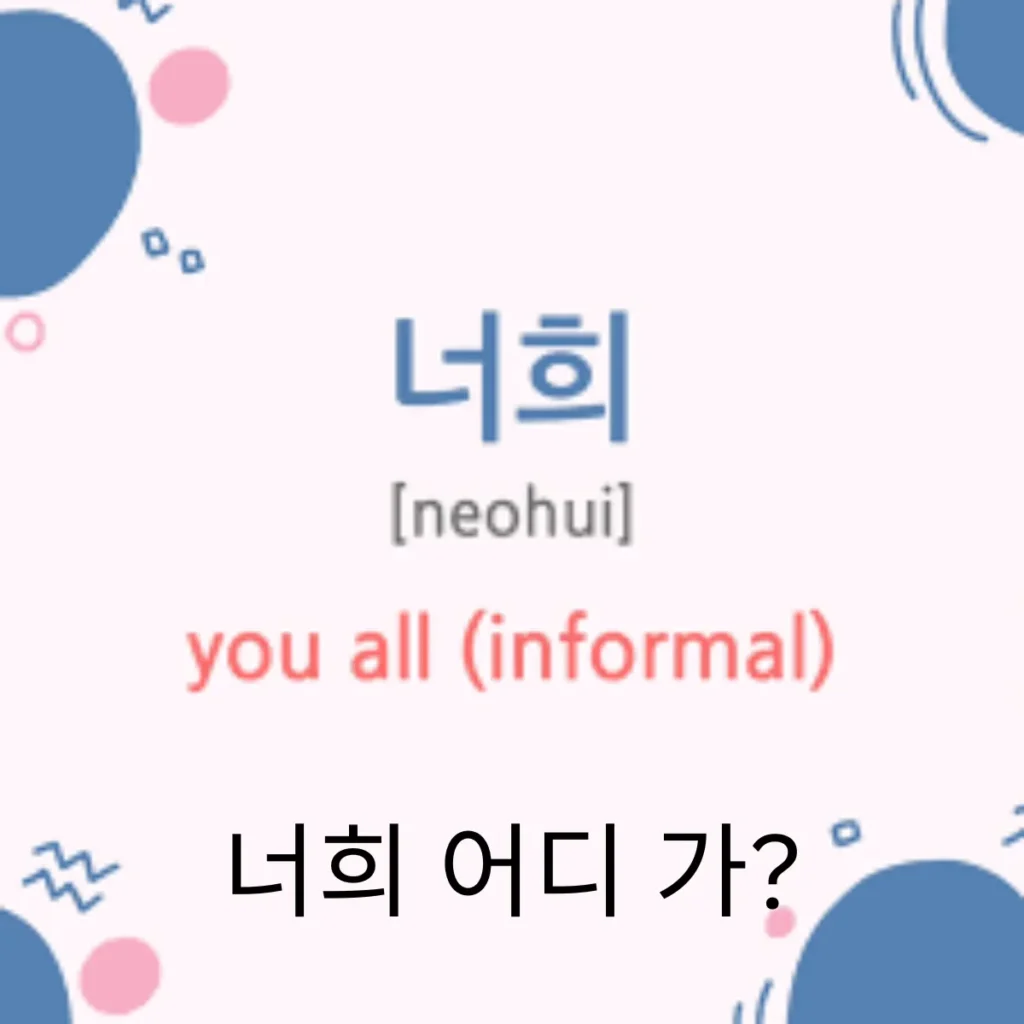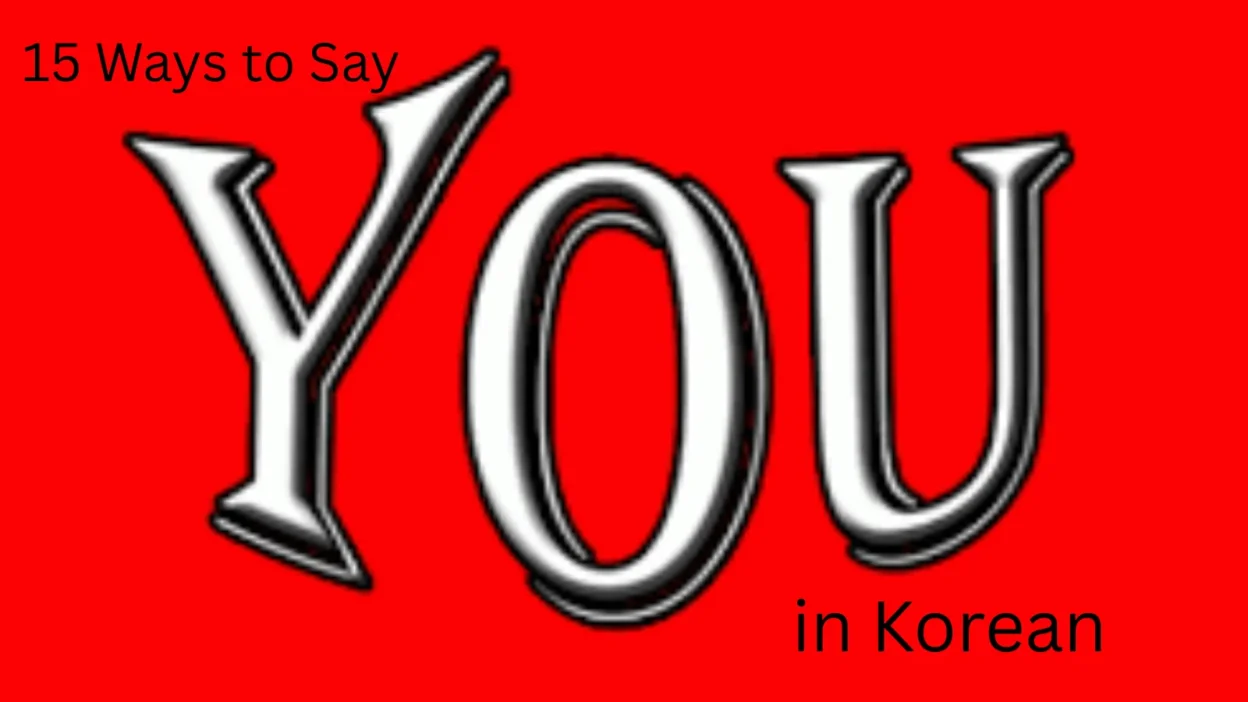Learning 15 ways to say you in Korean (and when to use them) can make your conversations sound more natural and respectful.
Unlike English, Korean rarely uses you directly, and the choice of word depends heavily on the relationship, level of formality, and social context. From casual everyday speech to polite professional settings, each version of you carries its own tone and meaning. In this guide, you’ll discover 15 different expressions for you in Korean, along with explanations and examples to help you know exactly when and how to use them. By mastering these phrases, you’ll avoid common mistakes and sound more like a native speaker.
Say You In Korean
This guide will teach you 15 ways to say you in Korean, complete with example conversations and cultural context, so you can speak naturally and respectfully in any situation.
1. 당신 (dangshin)
Origin:
Originally respectful, “당신” is often used between married couples, or in writing. But in speech, it can sound cold or confrontational unless used romantically.
Example:
👤 User A: 당신은 오늘 어때요? (How are you today?)
👤 User B: 잘 지냈어요. 고마워요. (I’ve been well, thank you.)
Use: Formal or romantic; can sound rude if misused.
2. 너 (neo)

Origin:
The most direct translation of “you,” but only for close friends, younger people, or when you’re being very casual.
Example:
👤 User A: 너 뭐 해? (What are you doing?)
👤 User B: 그냥 쉬고 있어. (Just relaxing.)
Use: Very informal; not for people older or unfamiliar.
3. 자네 (jane)
Origin:
Traditional and rarely used today except by older men to address younger people or junior colleagues.
Example:
👤 User A: 자네, 요즘 일은 어떤가? (How’s work lately?)
👤 User B: 잘 하고 있습니다, 선배님. (It’s going well, sir.)
Use: Polite but old-fashioned; hierarchical.
4. 그쪽 (geujjok) – “That side”
Origin:
A neutral and polite way to refer to someone, especially in formal speech, meetings, or when you don’t know someone well.
Example:
👤 User A: 그쪽은 어떻게 생각하세요? (What do you think?)
👤 User B: 동의합니다. (I agree.)
Use: Polite and indirect; used with strangers or in customer service.
5. 그대 (geudae)
Origin:
An old-fashioned poetic term used mostly in songs, poems, or romantic writing.
Example:
👤 User A: 그대를 처음 본 순간을 기억해요. (I remember the moment I first saw you.)
👤 User B: 정말 감동이에요. (That’s so touching.)
Use: Romantic, lyrical; rarely spoken in conversation.
6. 너희 (neohui) – “You all”

Origin:
The plural form of “너”, used when addressing multiple close friends or younger people.
Example:
👤 User A: 너희 어디 가? (Where are you guys going?)
👤 User B: 피자 먹으러! (To eat pizza!)
Use: Informal plural “you.”
7. 형/누나/오빠/언니 + 는 – Using their title instead of “you”
Origin:
Koreans often avoid using “you” entirely and instead refer to the person’s title or name. This is the most natural and respectful way.
Example:
👤 User A: 오빠는 뭐 먹고 싶어? (Oppa, what do you want to eat?)
👤 User B: 아무거나 괜찮아. (Anything is fine.)
Use: Common in daily life; respectful and natural.
8. 선생님 (seonsaengnim) – “Teacher” / Honorific
Origin:
Used to refer respectfully to teachers, elders, or professionals instead of “you.”
Example:
👤 User A: 선생님은 어떻게 생각하세요? (What do you think, teacher?)
👤 User B: 좋은 질문이에요. (Good question.)
Use: Very polite and respectful.
9. 이 사람 / 저 사람 – “This person / that person”

Origin:
Koreans often refer to someone indirectly, especially in group conversations.
Example:
👤 User A: 이 사람은 정말 친절해요. (This person is really kind.)
👤 User B: 고마워요! (Thank you!)
Use: Polite and indirect; avoids direct “you.”
10. 성함 + 씨 (Name + ssi)
Origin:
Using someone’s full name or given name plus “씨” (like Mr./Ms.) is more respectful than saying “you.”
Example:
👤 User A: 민수 씨는 어디 살아요? (Where do you live, Minsu?)
👤 User B: 서울이에요. (In Seoul.)
Use: Formal and respectful.
11. 임자 (imja)
Origin:
An old-fashioned way to address a spouse, especially in historical dramas or rural speech.
Example:
👤 User A: 임자, 밥 다 됐어. (Darling, dinner’s ready.)
👤 User B: 잘 먹을게요. (Thanks, I’ll eat well.)
Use: Archaic, rural, or historical.
12. 애야 (aeya) – To a child
Origin:
A tender, affectionate way to call a young child or toddler instead of saying “you.”
Example:
👤 User A: 애야, 뭐 하고 있어? (Sweetie, what are you doing?)
👤 User B: 그림 그려요! (I’m drawing!)
Use: Loving and gentle, used with children.
13. 자기야 (jagiya) – “Honey” or “Babe”
Origin:
Popularized in romantic relationships, especially among couples and K-dramas.
Example:
👤 User A: 자기야, 피곤해 보여. (You look tired, babe.)
👤 User B: 좀 피곤해. (Yeah, a little.)
Use: Intimate and romantic.
14. 형님/누님 (hyungnim/nunim)
Origin:
Formal versions of “older brother/sister,” especially used in military, gangster, or traditional settings.
Example:
👤 User A: 형님은 어떻게 생각하십니까? (What do you think, sir?)
👤 User B: 네 말이 맞다. (You’re right.)
Use: Very respectful; male-dominated speech contexts.
15. 너 말이야 (neo mariya) – “I’m talking to you”
Origin:
Used when addressing someone directly, often in frustration or emphasis.
Example:
👤 User A: 너 말이야! 왜 그렇게 했어? (You! Why did you do that?)
👤 User B: 미안해. 오해였어. (Sorry. It was a misunderstanding.)
Use: Confrontational or emotional.
FAQs
1. What is the basic word for “you” in Korean?
The most common word is “당신” (dangsin), but it’s not used often in everyday conversation.
2. Why don’t Koreans use “you” often?
In Korean culture, using someone’s name or title is more polite than saying “you.” Saying “you” directly can sound rude in many situations.
3. When can I use “당신”?
You can use “당신” in romantic contexts (like between married couples) or in songs and writing, but not usually in casual speech.
4. How do I say “you” politely to an older person?
Instead of “you,” use their title or name with –님 (nim). For example, say “선생님” (teacher) or “사장님” (boss).
5. What’s a casual way to say “you” in Korean?
Among close friends or people your age, you can use “너” (neo).
6. Is “너” rude?
It’s not rude with close friends, but it can sound disrespectful if used toward older people or strangers.
7. Are there regional or dialect words for “you”?
Yes, in some regions you might hear “니” (ni) instead of “너,” especially in southern parts of Korea.
8. How do couples say “you” in Korean?
Couples often use “자기” (jagi), which means “honey” or “darling,” instead of “you.”
9. How do you say “you guys” or “you all” in Korean?
You can say “너희” (neohui) for casual speech or “여러분” (yeoreobun) for polite and formal situations.
10. What’s the safest way to say “you” in Korean?
The safest way is to avoid “you” and use the person’s name, title, or role instead—it sounds more natural and respectful.
Conclusion:
Mastering 15 ways to say you in Korean helps you navigate conversations with confidence, clarity, and cultural sensitivity.
Since Korean is deeply rooted in respect and hierarchy, choosing the right word for you can make a big difference in how your message is received. By practicing these expressions, you’ll improve your fluency and avoid sounding rude or overly formal. Remember — in many cases, the most natural way to say you in Korean is to skip the pronoun entirely and use the person’s name or title instead.



